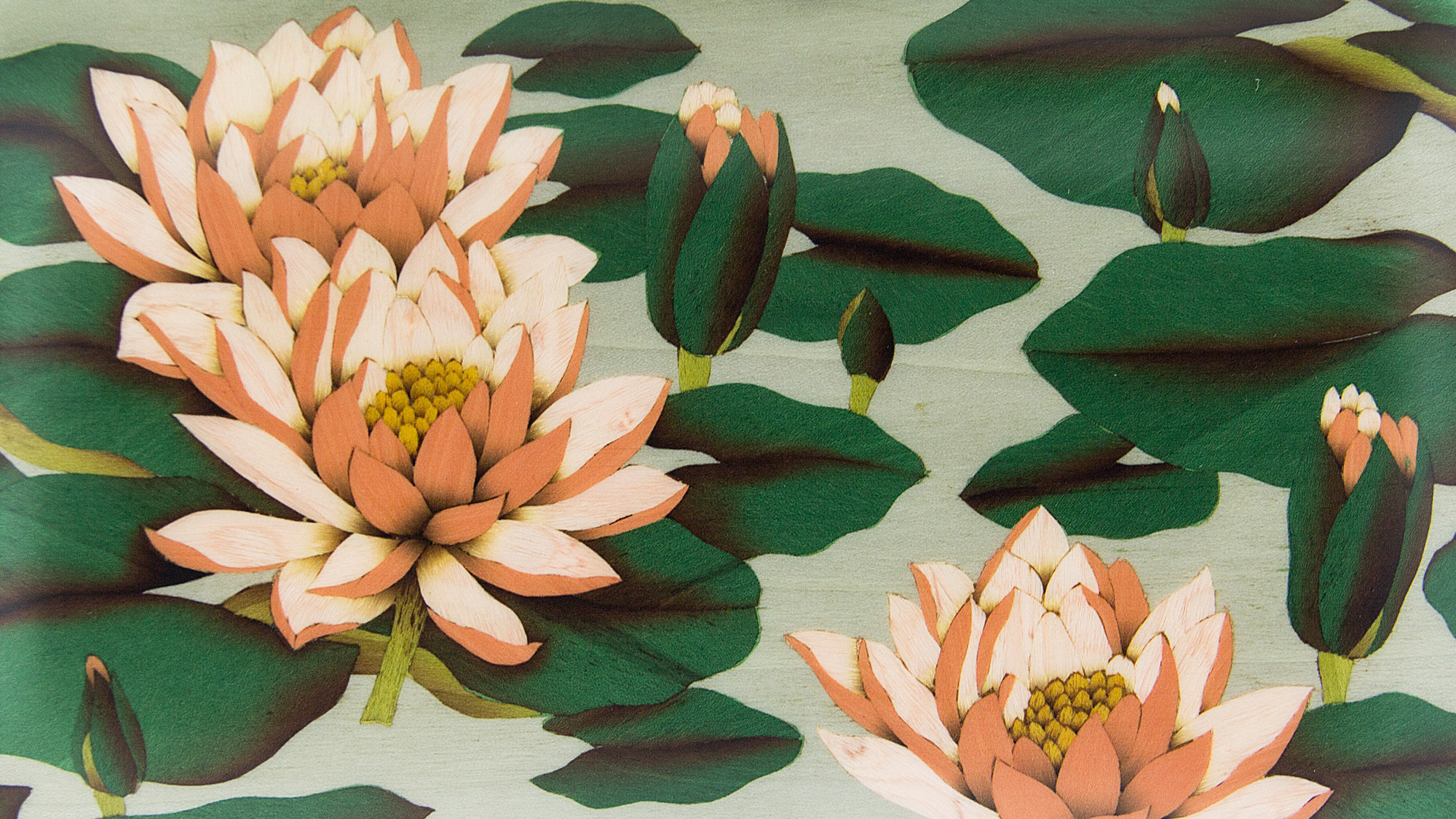PRESS
For all enquiries
press@silviafurmanovich.com

Since 2016, Furmanovich has pioneered the centuries-old technique of wood marquetry into fine jewelry, creating a series of award-winning, ever evolving collections.
Pairing the tones and textures of indigenous salvaged wood with rare and precious gems, gold and diamonds, the designer discovered the technique during a trip to Acre, Brazil’s Westernmost state, whereby she encountered skilled craftsmen who master the art of marquetry using native wood.

Studiolo from the Ducal Palace in Gubbio
The Metropolitan Museum of Art
Marquetry – the highly prized, lavishly ornamental decorative art – has roots in ancient Italian marble inlay, then appropriated by cabinet makers in Antwerp in the early 16th Century who used wood in place of stone. While the end result looks seamless, marquetry is a painstaking process of assembling hand- cut wood veneer shapes created from found objects in the forest.
Artisans, looking for raw materials such as fallen tree branches or bark, collect local specimens – in this case, colored wood including Muirapiranga (red), Tatajuba (yellow), Louro Abacate (Green), Roxinho (purple) and Azul Carvalho (blue) – that they reclaim, thereby making the process entirely sustainable. A proprietary system of washing and soaking the wood in water and minerals, enhancing its existing color naturally, allows for a variety of hues that is at once earthy and bold.
SOURCING VENEERS
In this preparatory stage, artisans go in search of wood that has fallen to the forest ground or the remainsof wood from the furniture industry to source a variety of wood veneers.
COLORING THE WOOD
Cabinet makers perfected the art of coloring wood veneers using natural chemical reactions instead of dyes or artificial pigments as early as the sixteenth century. Craftsmen have been staining wood veneers ever since, by soaking them in water mixed with plant extracts. The time required for the color to sink into the wood depends on its thickness and density. When the desired color is obtained, the wood is left out to dry in the sun for an extended period of time.
CUTTING OUT THE DESIGNS
Using a stencil to cut tiny pieces out of colored veneers,and assembling them to create a design.
FINAL ASSEMBLY
Applying the completed design onto its support (apiece of jewelry, clutch, or decorative object) by gluing, sanding and finishing.

Besides native wood, the rainforest is also represented in vibrant renderings of tropical flowers such as bromelia, plumeria and lotus, and through the use of candy-colored faceted gemstones set against the marquetry to create a contrast of sparkle and subtlety. Amethyst, citrine, topaz, peridot, moonstone, beryl, prasiolite, fire opal, garnet and smoky quartz are all used as accents to elevate the pieces from craft to couture.


Silvia Furmanovich’s minimasterpieces... give refined meaning
to the term ‘wearable art
T: MAGAZINE / THE NEW YORK TIMES STYLE MAGAZINE
